Stella D'Oro Daylily
Stella D'Oro Daylily is a smaller cultivar of daylily that reblooms rather than blooming only once during the growing season. It grows as a low clump of arching, green, blade-like leaves.
From late spring to late summer, fragrant, bell-shaped, yellow flowers bloom. A very easy perennial flower to grow, if given enough moisture. If the location dries out too much, the plant will be smaller and flower less.
.jpg)
.jpg)
.jpg)
.jpg)
Stella D'Oro Daylily
Stella D'Oro Daylily is a smaller cultivar of daylily that reblooms rather than blooming only once during the growing season. It grows as a low clump of arching, green, blade-like leaves.
From late spring to late summer, fragrant, bell-shaped, yellow flowers bloom. A very easy perennial flower to grow, if given enough moisture. If the location dries out too much, the plant will be smaller and flower less.
Plant details
Botanic Name
Hemerocallis x 'Stella D'Oro'
Pronunciation
hem-er-oh-KAL-iss
Mature Height
1 to 2 ft.
Mature Spread
1 to 2 ft.
Water usage
One Droplet: Water twice per month or less, once established.
Two Droplets: Water about once per week, once established.
Three Droplets: Water about twice per week, once established.
Flower Color
yellow
Bloom time
June
Colorado Native
No
Natural Habitat
genus native to Central Europe to China, Japan
Light Requirements
sun
Cold Hardiness
USDA zones 2-9
Elevation Limit
hardy to 10,000 ft.
Performance
While not grown at the Water Wise Demonstration Garden, Stella D'Oro daylily grows well throughout the Colorado Springs area.
Maintenance
When all flowering is finished on a stalk, trim it below the tips of the leaves so it is not visible. Daylily leaves dieback with frost in the fall. Trim the leaves to ground level once they have frozen and collapsed.
See in a landscape
This backyard needs to be durable enough for this family of adults, kids and dogs. Kentucky bluegrass can be a great option for high traffic yards, just make sure to keep the area under 1000 square feet, and till and amend the soil before planting seed or sod. This yard also features shrubs, perennials and vegetables around the grass and is watered with efficient spray heads and nozzles in the grass area and drip irrigation in the planted areas.
With higher water using plants like Kentucky bluegrass, it's important to make sure that the ground is level where it's planted to prevent the water from running right off when watered. The stone walls in this yard help make a flat place to plant and add interest and texture to the front yard. Because this yard is so big, much of the grass was removed from where it was not useable, and shrubs and low maintenance perennials were planted instead. Wood chip mulch helps the soil from drying out in the heat of the summer and also helps to prevent weeds from growing around the plants.
The parkway in this downtown neighborhood was a great candidate for a conversion to xeriscape from turf. Parkways like this can be difficult to water because of the narrow width, and are a great place to start with xeriscape. This parkway features a small ornamental tree and flowering perennials, ornamental grasses and delicate groundcovers. The middle of the parkway has a stone pathway which accommodates the foot traffic to and from the street. Most of the plants in this parkway should be cut back in the spring and the parkway should be mulched to help the soil retain moisture and curtail weed growth.
Xeriscape is notzero-scape. Even if you'd like to use rock mulch for your yard, there are plenty of plants that grow well with the extra heat. Rock mulch can be great for areas with high winds where wood mulch may not stay put. Rock is used throughout this landscape, and is planted with trees, shrubs and perennials that can tolerate the extra heat. This yard has a slight slope, so a small rock wall was installed in order to flatten out the planting area near the front door. This also helps add dimension and break up the large space.
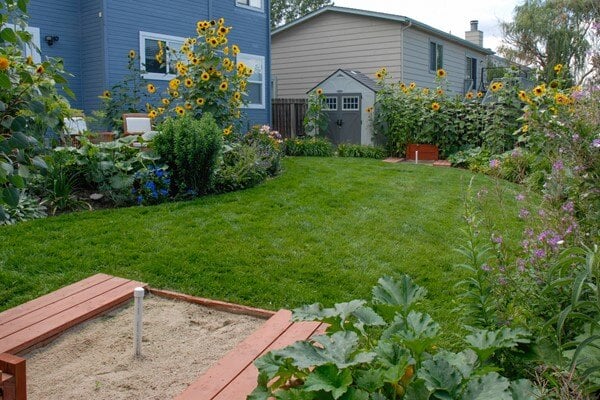
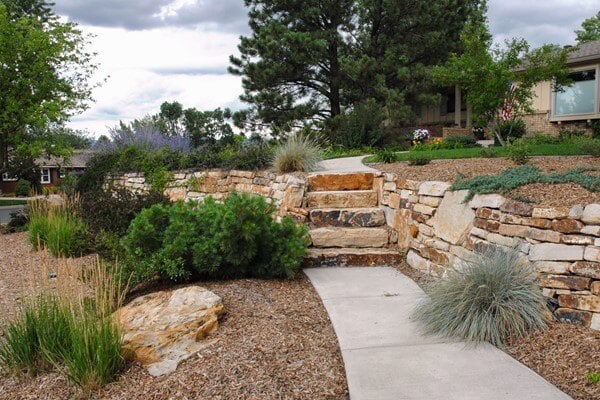
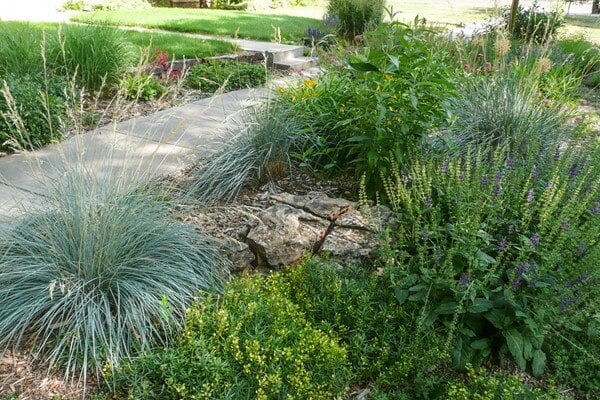
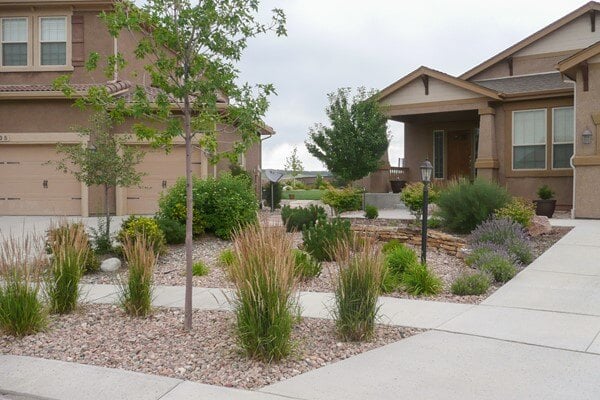
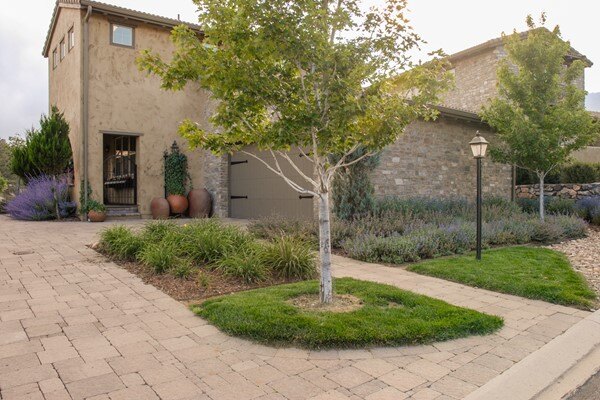
.jpeg)
.jpeg)
.jpeg)
.jpeg)
.jpeg)
.jpeg)
.jpeg)
.jpeg)
.jpeg)
.jpeg)